Urgent warning for British beachgoers: Record numbers of deadly Portuguese Man O’Wars flock to British waters – with 16% increase in sightings this year
From highland cows to red deer, Britain is home to some of the most incredible animals in the world.
But experts have warned of an influx of a rather unexpected creature to British shores: the Portuguese Man O’War.
In its latest report, the Marine Conservation Society has revealed that 280 of the deadly creatures have been spotted on British coasts this year.
That is an increase of 16 percent compared to the number of observations last year.
Often confused with jellyfish, the Portuguese Man O’War is actually a siphonophore: a colony of small zooids that all work together as if they were one animal.
While they are undeniably beautiful to look at, experts have urged beachgoers to stay away.
“The tentacles contain stinging nematocysts, microscopic capsules filled with coiled, barbed tubes that release venom that can paralyze and kill small fish and crustaceans,” the National Ocean Service explains.
‘Although the man-of-war sting is rarely fatal to humans, it delivers a painful blow and causes welts to appear on exposed skin.’
From highland cows to red deer, Britain is home to some of the most incredible animals in the world. But experts have warned of an influx of a rather unexpected creature to British shores: the Portuguese Man O’War
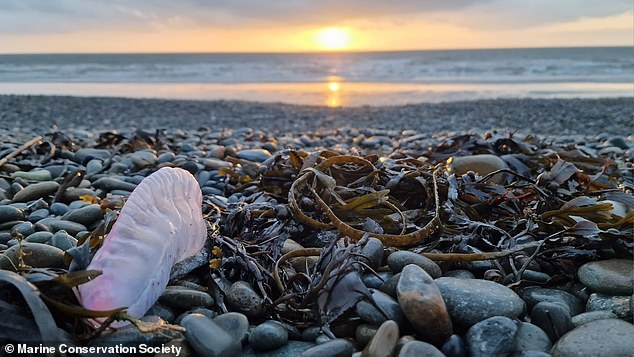
In its latest report, the Marine Conservation Society has revealed that 280 of the deadly creatures have been spotted on British coasts this year.
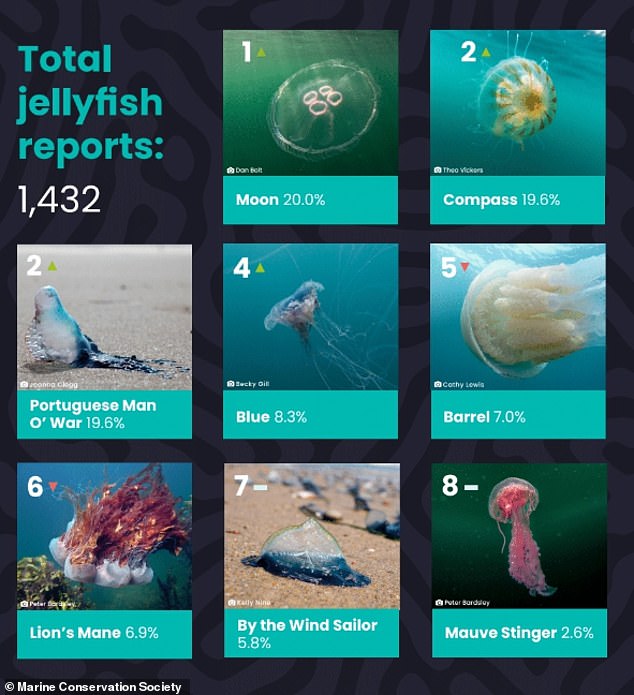
This year’s report – which runs from October 1, 2023 to September 30, 2024 – shows a total of 1,432 jellyfish have been spotted in Britain this year
This year’s report – which runs from October 1, 2023 to September 30, 2024 – shows that a total of 1,432 jellyfish have been spotted in Britain this year.
Moon jellyfish topped the list, with 286 spotted jellyfish, followed by Compass Jellyfish (280 spotted) and the Portuguese Man O’Wars (280 spotted).
Calum Duncan, head of policy and advocacy at the Marine Conservation Society, said: ‘The increase in the number of Portuguese warships in October can be attributed to strong westerly winds bringing them to our coast.
‘Historically, these creatures are not found in British and Irish waters, so their increase may be linked to shifts in our climate or changes in the marine ecosystem.’
The Portuguese Man O’War is also called the ‘Bluebottle’ and is usually found in warm, tropical and subtropical waters.
However, sometimes in westerly winds it can be blown into British seas and washed up on the west coast of Britain.
Most commonly these are the Isles of Scilly and Cornwall, but they are increasingly seen in West and North Wales, and even as far north as Cumbria.
Although the main body is usually only 30 cm long, the tentacles can extend up to 20 meters.
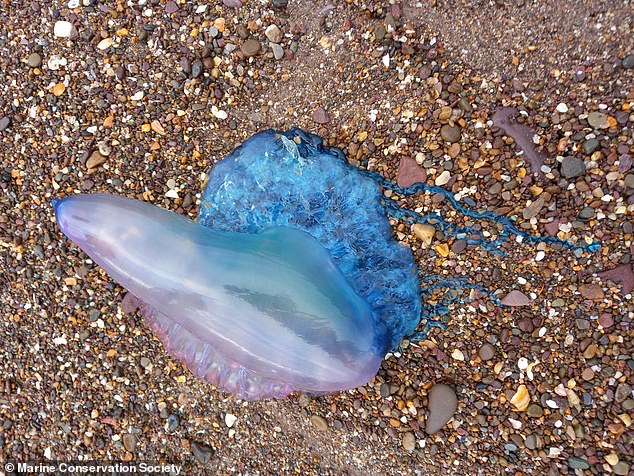
The Portuguese Man O’War is also known as the ‘Bluebottle’ and is typically found in warm, tropical and subtropical waters
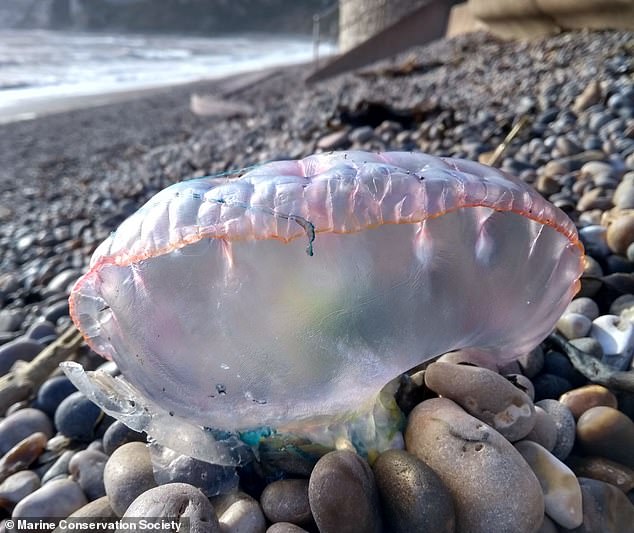
The strange creature has a large purple body, with pink and long blue-purple tentacles on the top

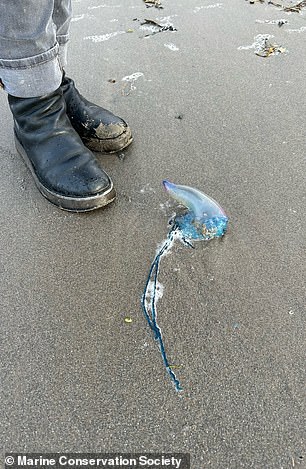
Although the main body is usually only 30 cm long, the tentacles can extend up to 20 meters.
And it’s these tentacles that can land you in hot water.
‘They are fearsome predators, catching small fish and crustaceans with their long stinging tentacles,’ the Dorset Wildlife Trust has previously explained.
‘It is also these tentacles that you should pay attention to; they can sting long after the animal has died.”
The strange creature has a large purple body, with pink and long blue-purple tentacles on the top.
They lose their color quickly after beaching and can appear translucent with just a hint of purple.
The experts believe the increase in sightings could be linked to climate change, with jellyfish and Portuguese Man O’Wars attracted to the warmer waters.
‘Jellyfish populations are highly variable from year to year and depend on several environmental factors that change each year, such as sea temperatures and storms,’ says Dr Peter Richardson, Head of Ocean Recovery at the Marine Conservation Society.
